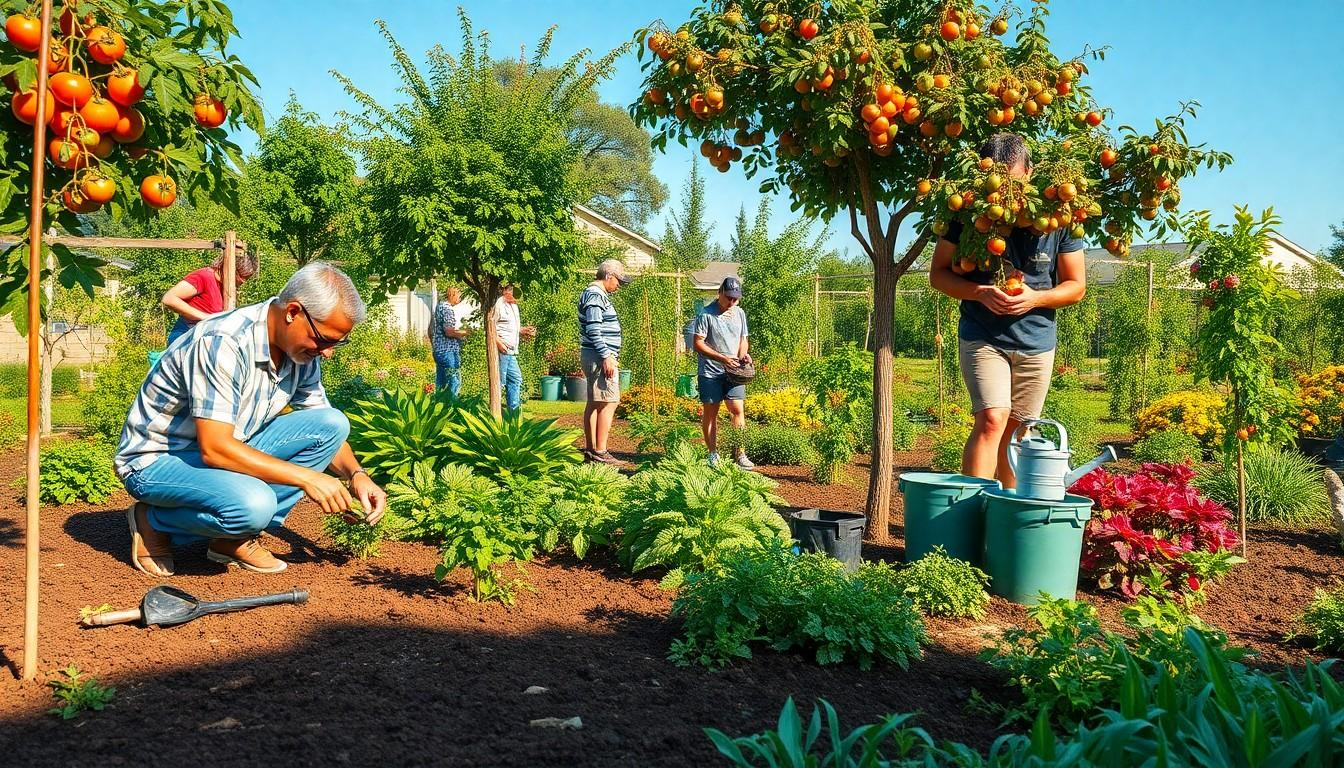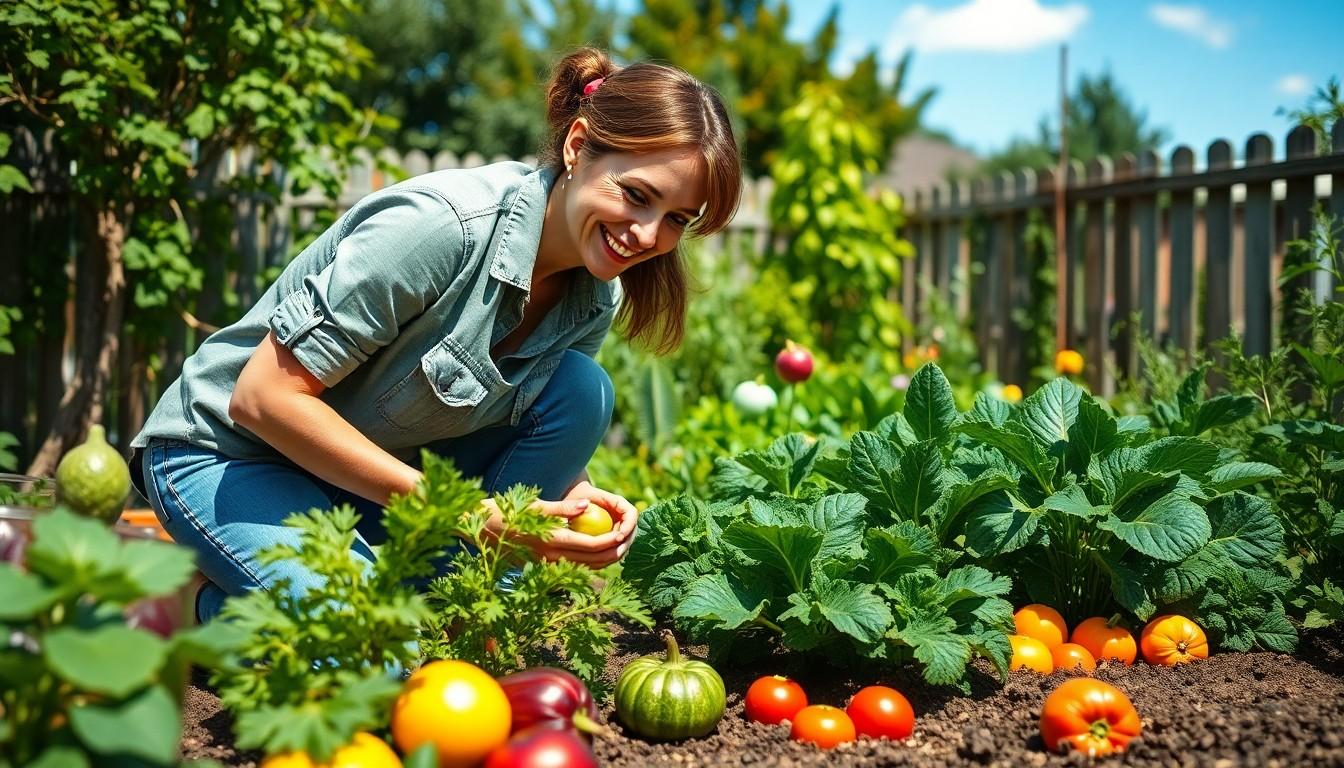In a world where convenience often reigns supreme, the idea of real self-sufficiency might seem as outdated as dial-up internet. But what if it’s time to ditch the dependency on takeout menus and grocery store runs? Imagine growing your own food right in your backyard or whipping up a DIY project that leaves your neighbors green with envy. Real self-sufficiency isn’t just a trend; it’s a lifestyle that empowers individuals to take control of their lives.
Real Self-Sufficiency
Real self-sufficiency goes beyond just providing for oneself. It signifies a lifestyle dedicated to reducing dependency on external systems.
Definition of Real Self-Sufficiency
Real self-sufficiency means creating a sustainable life by producing food and resources necessary for daily living. Individuals engaged in this practice actively cultivate gardens, raise livestock, or craft their own goods. They aim to minimize reliance on commercial products. Sustainable practices like composting and rainwater collection often become integral to this lifestyle. Ultimately, real self-sufficiency promotes resilience by empowering individuals to meet their own needs.
Importance of Real Self-Sufficiency
Real self-sufficiency plays a critical role in personal empowerment and community resilience. Individuals equipped to grow their own food contribute to food security, reducing vulnerability during economic downturns. Sustainable living practices minimize environmental impact, addressing concerns like climate change. Many people experience improved physical and mental health through engaging with nature. The network of like-minded individuals often fosters community engagement and collaboration. In summary, embracing real self-sufficiency enhances individual well-being while bolstering local communities.
Key Elements of Real Self-Sufficiency

Real self-sufficiency incorporates various elements crucial for achieving autonomy. Essential components include food production, water management, and energy independence.
Food Production and Preservation
Growing food proves vital for self-sufficiency. Individuals can cultivate vegetable gardens, fruit trees, and herbs, promoting a diverse diet. Techniques like canning, drying, and fermenting help preserve harvests, ensuring ample supplies year-round. Prioritizing seasonal planting encourages sustainability and reduces reliance on store-bought produce. Learning about companion planting enhances crop yield and biodiversity. Tasks such as composting enrich soil health, fostering productive gardens. These practices establish a strong foundation for independent living.
Water Management
Managing water resources becomes critical for sustainability. Rainwater harvesting allows individuals to collect and store water effectively. Utilizing drip irrigation systems conserves water while efficiently nourishing plants. Implementing greywater recycling further reduces waste, repurposing water for irrigation. Regular checks on water usage promote mindful consumption. Understanding local water laws helps navigate collection and conservation efforts. These strategies ensure reliable access to water, reinforcing independence.
Energy Independence
Achieving energy independence provides freedom from external suppliers. Solar panels function as primary sources of renewable energy, reducing reliance on the grid. Wind turbines can supplement electricity needs in appropriate locations. Prioritizing energy efficiency through insulation and energy-efficient appliances minimizes usage. Utilizing backup systems, like batteries, ensures power availability during outages. Diversifying energy sources fosters resilience in changing environments. Embracing these methods enhances self-sufficiency while contributing to a sustainable future.
Challenges to Achieving Real Self-Sufficiency
Achieving real self-sufficiency presents several challenges. Understanding these challenges is crucial for those committed to a self-sufficient lifestyle.
Economic Factors
Economic factors significantly impact the ability to become self-sufficient. Limited resources can hinder the initial investment required for tools, seeds, and livestock. Fluctuating market prices for essential items, such as fertilizers and feed, also create financial unpredictability. Compounding this, high costs of land and urban living often restrict opportunities for individuals wishing to grow their own food. Certain regions may lack access to markets that support local products. These economic constraints discourage many individuals from pursuing self-sufficient practices, making it essential to plan budget-friendly strategies that maximize efficiency while minimizing costs.
Environmental Constraints
Environmental constraints pose additional challenges to self-sufficiency. Not all areas provide optimal conditions for growing food or raising animals. For example, poor soil quality, harsh weather, and limited water resources can jeopardize cultivation efforts. Additionally, urban environments often lack suitable space for gardening or raising livestock. Climate change exacerbates these issues, affecting seasonal patterns and crop yields across various regions. Adapting to these environmental limitations requires innovators capable of implementing creative solutions. Utilizing techniques such as permaculture and hydroponics can help people maximize their available space and resources, paving the way for sustainable practices.
Practical Steps Towards Real Self-Sufficiency
Real self-sufficiency starts with practical actions. By making small, mindful changes, individuals can cultivate self-reliance that enriches their lives.
Start Small with Gardening
Starting small with gardening provides an accessible entry point. Placing container gardens on balconies or yards allows individuals to grow herbs and vegetables. Beginners can begin with easy-to-grow crops like tomatoes and lettuce. Utilizing vertical space maximizes yield while conserving area. Regularly tending to plants promotes a sense of accomplishment and connection to nature. Over time, expanding garden beds or implementing raised planters can improve food production and personal satisfaction. Developing a routine encourages continuous learning about different growing techniques and seasonal crops.
Implementing Sustainable Practices
Implementing sustainable practices cultivates a self-sufficient lifestyle. Composting kitchen scraps not only reduces waste but also enriches garden soil. Rainwater harvesting systems facilitate water collection, ensuring a reliable supply during dry spells. Growing perennials minimizes the need for replanting each season, leading to less maintenance and resource use. Using natural pest control methods, such as companion planting, promotes a healthier garden ecosystem. By adopting energy-efficient tools and techniques, it becomes easier to reduce reliance on external energy sources. Each small step contributes to a more sustainable and self-sufficient way of living.
Independence and Resilience
Real self-sufficiency represents a transformative journey toward independence and resilience. By embracing practices like growing food and managing resources, individuals can reclaim control over their lives and contribute to a more sustainable future. This lifestyle fosters not only personal empowerment but also strengthens community ties, creating networks of support and collaboration.
Although challenges exist, starting small and adopting innovative techniques can pave the way for success. Each step taken towards self-sufficiency enhances well-being and reduces reliance on external systems. As more people commit to this path, they cultivate a culture of sustainability that benefits everyone. Embracing real self-sufficiency is more than a choice; it’s a powerful movement toward a healthier planet and a more fulfilling life.

